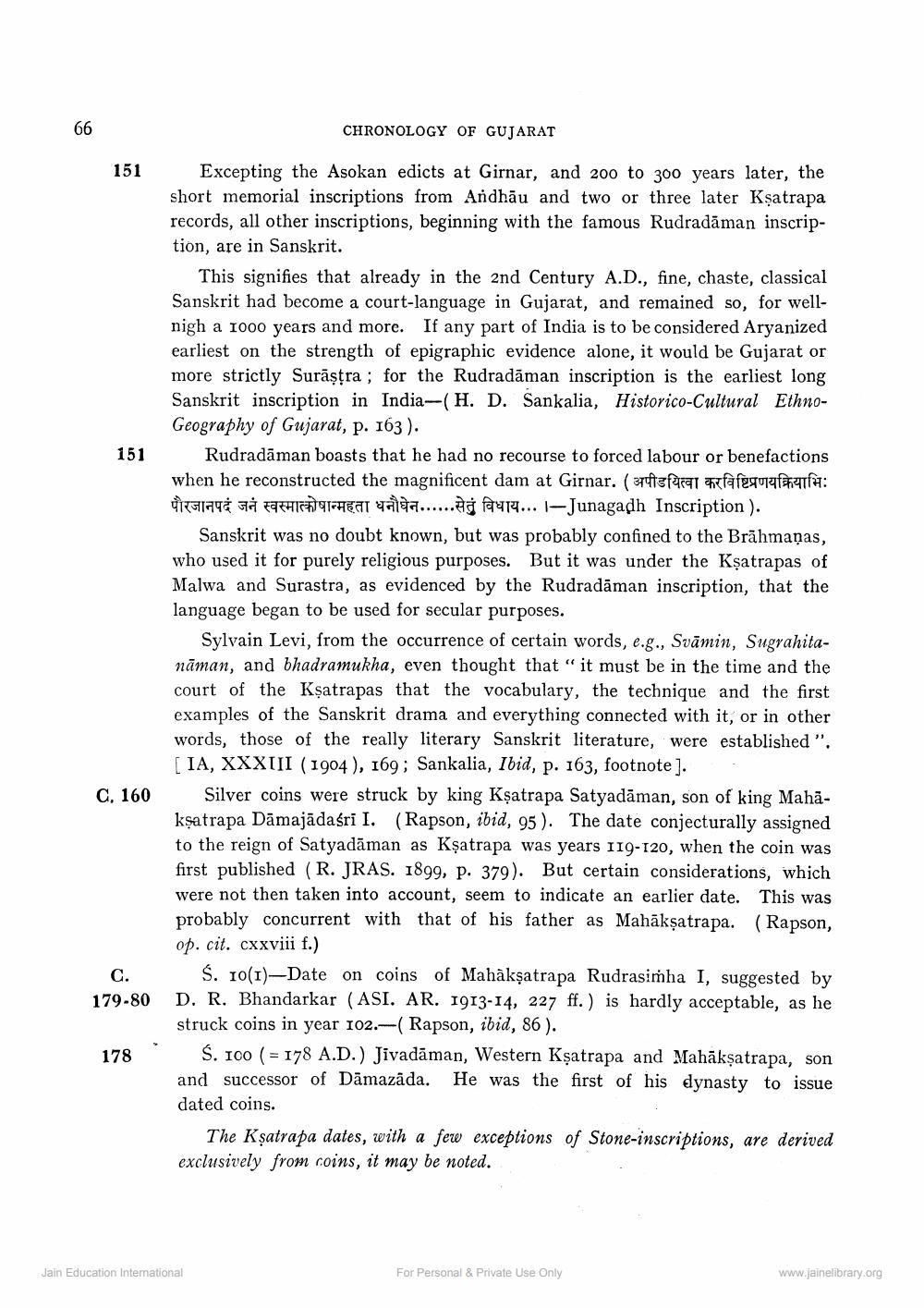________________
66
CHRONOLOGY OF GUJARAT
151
151
Excepting the Asokan edicts at Girnar, and 200 to 300 years later, the short memorial inscriptions from Andhāu and two or three later Kşatrapa records, all other inscriptions, beginning with the famous Rudradāman inscription, are in Sanskrit.
This signifies that already in the 2nd Century A.D., fine, chaste, classical Sanskrit had become a court-language in Gujarat, and remained so, for wellnigh a 1000 years and more. If any part of India is to be considered Aryanized earliest on the strength of epigraphic evidence alone, it would be Gujarat or more strictly Surāşțra ; for the Rudradāman inscription is the earliest long Sanskrit inscription in India-(H. D. Sankalia, Historico-Cultural EthnoGeography of Gujarat, p. 163).
Rudradāman boasts that he had no recourse to forced labour or benefactions when he reconstructed the magnificent dam at Girnar. (अपीडयित्वा करविष्टिप्रणयक्रियाभिः ů151748 58 FatHICHTHEAT A...... AD 919... 1-Junagadh Inscription ).
Sanskrit was no doubt known, but was probably confined to the Brāhmaṇas, who used it for purely religious purposes. But it was under the Kşatrapas of Malwa and Surastra, as evidenced by the Rudradāman inscription, that the language began to be used for secular purposes.
Sylvain Levi, from the occurrence of certain words, e.g., Svāmin, Sugrahitanāman, and bhadramukha, even thought that " it must be in the time and the court of the Ksatrapas that the vocabulary, the technique and the first examples of the Sanskrit drama and everything connected with it, or in other words, those of the really literary Sanskrit literature, were established". [IA, XXXIII (1904), 169; Sankalia, Ibid, p. 163, footnote].
Silver coins were struck by king Kșatrapa Satyadāman, son of king Mahaksatrapa Dāmajādasri I. (Rapson, ibid, 95). The date conjecturally assigned to the reign of Satyadāman as Kşatrapa was years 119-120, when the coin was first published (R. JRAS. 1899, p. 379). But certain considerations, which were not then taken into account, seem to indicate an earlier date. This was probably concurrent with that of his father as Mahākşatrapa. (Rapson, op. cit. cxxviii f.)
Ś. 10(1)-Date on coins of Mahākşatrapa Rudrasimha I, suggested by D. R. Bhandarkar (ASI. AR. 1913-14, 227 ff.) is hardly acceptable, as he struck coins in year 102.-( Rapson, ibid, 86).
S. 100 ( = 178 A.D.) Jivadāman, Western Ksatrapa and Mahāksatrapa, son and successor of Dāmazāda. He was the first of his dynasty to issue dated coins.
The Ksatrapa dates, with a few exceptions of Stone-inscriptions, are derived exclusively from coins, it may be noted.
C. 160
179-80
178
Jain Education Intemational
For Personal & Private Use Only
www.jainelibrary.org




